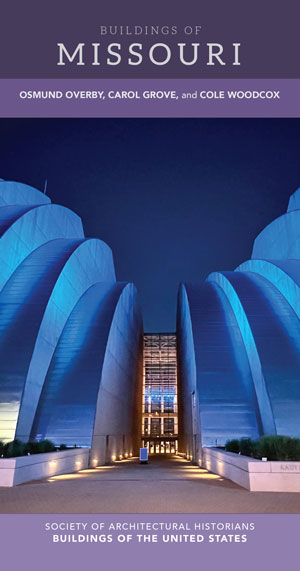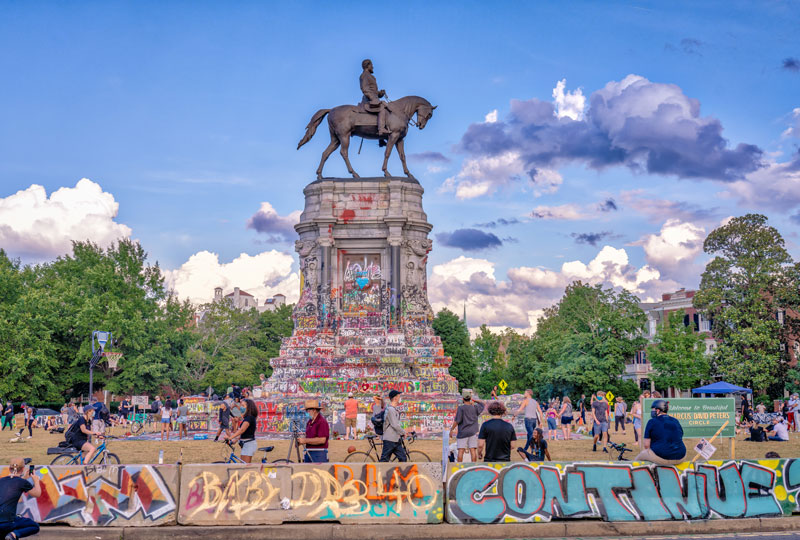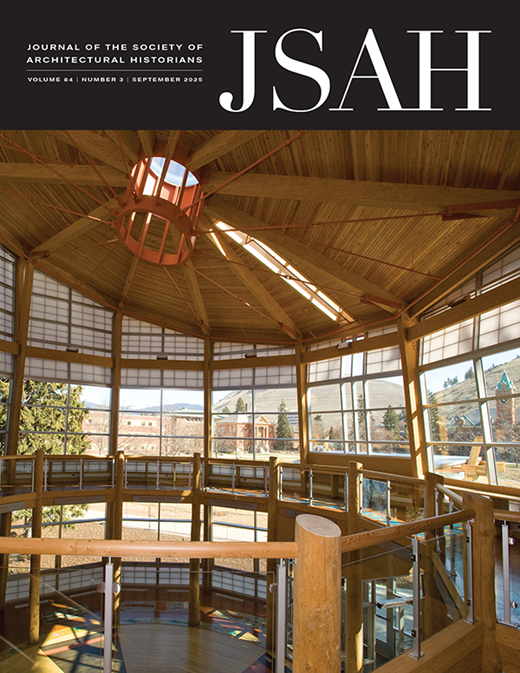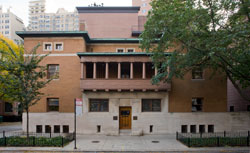-
Membership
Membership
Anyone with an interest in the history of the built environment is welcome to join the Society of Architectural Historians -
Conferences
Conferences
SAH Annual International Conferences bring members together for scholarly exchange and networking -
Publications
Publications
Through print and digital publications, SAH documents the history of the built environment and disseminates scholarship -
Programs
Programs
SAH promotes meaningful engagement with the history of the built environment through its programs -
Jobs & Opportunities
Jobs & Opportunities
SAH provides resources, fellowships, and grants to help further your career and professional life -
Support
Support
We invite you to support the educational mission of SAH by making a gift, becoming a member, or volunteering -
About
About
SAH promotes the study, interpretation, and conservation of the built environment worldwide for the benefit of all
Out Now: Buildings of Missouri
Osmund Overby, Carol Grove, and Cole Woodcox
Clothbound | 624 pages | 5 x 9.675 $75.00 | ISBN 978-0-8139-4959-8 | March 2025
From Hannibal to Carthage and scores of places in between, the definitive guide to the state’s architecture, encompassing nearly 900 building entries, 300 photographs (principally color), and 34 maps.
A nineteenth-century traveler once described Missouri as “neither east nor west nor north nor south.” It is a place of topographical transitions, delineated on the east by the Mississippi River and bisected by the Missouri River, encompassing a landscape of plains, bottomland, forests, and mountains, and home to iconic figures of American history—Laura Ingalls Wilder, Mark Twain, Scott Joplin, Jesse James, and Harry Truman, among them—as well as explorers, settlers, enslaved persons, immigrants, migrant workers, and, to this day, people starting new lives. Missouri has an equally rich mix of architectural styles and influences. The “Show Me State” volume in the award-winning Buildings of the United States series includes substantive guides to the major urban centers of St. Louis and Kansas City, surveys everything from Native American villages and petroglyphs to farms and small-town streetscapes, and highlights such landmarks of modern design as Adler and Sullivan’s Wainwright Building, Eero Saarinen’s iconic Gateway Arch, and Moshe Safdie’s Kauffman Center.
Osmund Overby was Professor Emeritus of Art History and Archaeology at the University of Missouri–Columbia and the author of William Adair Bernoudy, Architect: Bringing the Legacy of Frank Lloyd Wright to St. Louis. Carol Grove, formerly Adjunct Assistant Professor of American Art at the University of Missouri–Columbia, is the coauthor of Hare & Hare: Landscape Architects and City Planners. Cole Woodcox, formerly Professor of English at Truman State University, is Executive Director of the Council of Public Liberal Arts Colleges (COPLAC).


SAH Archipedia
SAH Archipedia, the open-access counterpart to BUS, includes histories and thematic essays from all of the published BUS volumes as well as additional peer-reviewed, born-digital content.
About Buildings of the United States
Until SAH published its first BUS volume in 1993, the United States had been one of the few countries in the developed world without a comprehensive series of publications addressing its national architectural heritage. Taking its cue from Buildings of England by Sir Nikolaus Pevsner, Buildings of the United States (BUS) has begun to fill this void by documenting, state-by-state, the infinite variety and history of American architecture from pre-settlement days to the present.Developed under the auspices of the Society of Architectural Historians, BUS eventually will encompass 60 volumes, each of which will be written by leading local and national scholars in the field and heavily illustrated with photographs and maps. A 12-member Editorial Committee drawing from institutions of higher learning from across the country as well as the National Park Service, the Library of Congress, and the Historic Resources Committee of the American Institute of Architects oversees the project.
The first ten volumes in the series were published by Oxford University Press. In October 2006, the Society signed a new publishing contract with the University of Virginia Press, which has published all subsequent volumes. The first four books in the series received the R. R. Hawkins Award presented by the Association of American Publishers, and the International Book Award from the American Institute of Architects for guidebooks. Buildings of Colorado received the Western Mountain Region AIA Award of Distinction. Buildings of Louisiana received the Louisiana Endowment for the Humanities Book of the Year award in 2004. Sales in hardcover and paperback editions are over 40,000.
Celebrating both high-style and vernacular architecture, every volume includes the full range of structures — from government edifices and grand private residences to gas stations and granaries — that are deemed important, especially representative of a particular style or type of building, or of other historical or architectural interest.
Intended as a resource for architectural historians, preservationists, and other professionals in the field, BUS volumes are also written to serve as comprehensive guides for the touring and general public, for use in elementary and secondary school classrooms, and for reference by community planners.
More than $4.5 million has been raised for the project to date. Early and continuing support has come from the National Endowment for the Humanities, matched by the private sector, including the Pew Charitable Trusts, the Graham Foundation for Advanced Studies in the Fine Arts, the Getty Foundation, the late Paul Mellon, Senator John D. Rockefeller IV, and Laurance Rockefeller to name a few.
Contact
Gabrielle Esperdy, Editor in Chief, SAH Archipedia/BUSAnn Gilkerson, Managing Editor, SAH Archipedia/BUS


